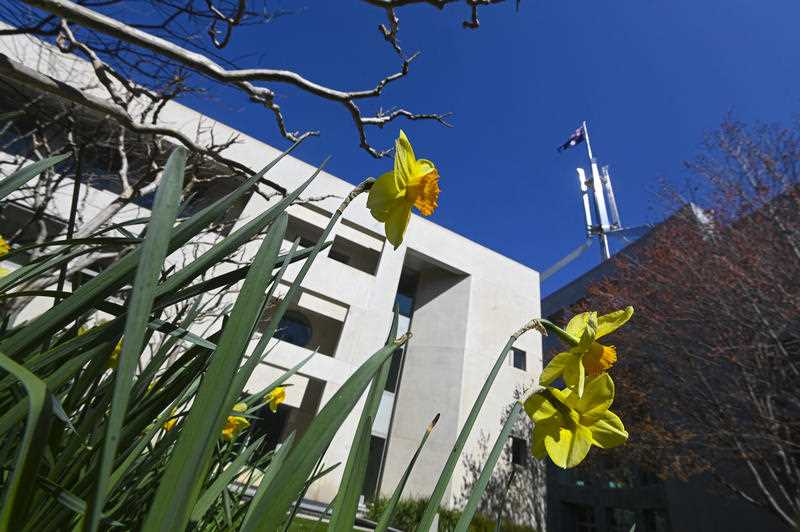Spring is likely to be warmer than usual with below average rainfall for most of Australia, according to the Bureau of Meteorology’s long-range forecast.
The warmer spring forecast comes as winter 2023 looks to be Australia’s warmest winter on record.
The national mean temperature for winter is currently tracking to be 1.54°C above the 1961–1990 average, which would make it Australia’s warmest winter since 1996.
Bureau of Meteorology climate services manager Dr Karl Braganza said unusually warm days are likely for almost all areas over spring, especially Western Australia and parts of the south-east.
“Spring is forecast to be warmer than usual across the country,” he said.
Dr Braganza said there is a significant contrast in climatic conditions this spring compared to last year when Australia had its second-wettest spring on record.
“This spring, the forecast shows most areas have a high chance of below average rainfall, and many areas have an increased chance of an unusually dry spring,” he said.
Areas with the highest chance of an unusually dry spring are the south-west and parts of the east.
There is always the risk of dangerous and destructive fires in Australia during spring.
Australia’s fire agencies have identified an increased risk of fire this spring for regions in New South Wales, Victoria, Queensland, South Australia and the Northern Territory as part of their Spring 2023 Bushfire Outlook.
Communities in these regions are urged to prepare and review their bushfire plans.
Other areas have normal fire risk.
Dr Braganza said: “The recent wildfires in Canada and Hawaii underscore risks that Australians are familiar with, in particular the catastrophic potential of fires that can occur near urban areas during periods of low rainfall.”
Springtime also sees the beginning of northern Australia’s wet season in October. The first significant rains of this northern wet season are likely to be later than usual for northern areas.
Climate influences on the spring long-range forecast include the possibility of an El Niño forming this year, with the Bureau currently at El Niño Alert.
When El Niño Alert criteria have been met in the past, an El Niño event has developed around 70% of the time.
Bureau of Meteorology senior climatologist Catherine Ganter said climate models also showed a positive Indian Ocean Dipole event is likely to form during spring.
“This increases our chances of below average rainfall for much of south-eastern and central Australia,” she said.
“If a positive IOD occurs with an El Niño, the drying effect is typically stronger and more widespread across Australia, compared to either event by themselves.”
Global sea surface temperatures have been the highest on record for the months of April to July 2023.
The oceans play an extremely important role in global climate, including the climate of Australia.
Bureau of Meteorology senior hydrologist Dr Masoud Edraki said the global climate system is looking very unusual right now.
“Record high warm sea surface temperatures in all of the global oceans are likely to continue to impact the weather we experience for many months,” he said.
“We know that a warmer climate does increase the risk of extreme weather including heatwaves and drought,” he said.
“We are already seeing longer fire seasons, and an increase in the number of dangerous fire weather days over most of Australia.”
“We don’t know yet how global warming, and particularly the increased warmth in the oceans, is affecting our typical climate drivers. We’ll continue to monitor this closely and how it is likely to affect Australia’s climate forecast.”
“Our climate forecast model is consistent with the international climate forecasts that show Australia is trending dry and warm for the coming season, particularly in the south-west and much of south-eastern Australia.”
For more information
- Long-range forecast for spring
- More summary information about winter conditions will be on the Bureau’s website from 1 September: gov.au/climate/current/season/aus/summary.shtml
- Winter summaries for each state, territory and major capital city, will be published on Wednesday, 6 September.
- Latest Climate Driver Update: Climate Driver Update (bom.gov.au)



